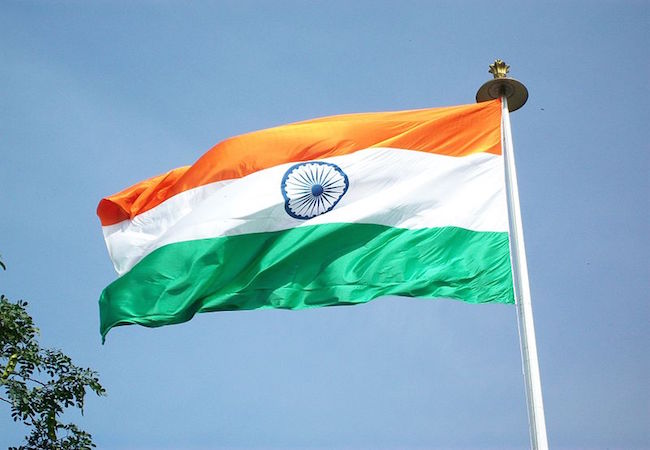India’s nuclear record

By Anaya Shahid
In a recent article “Dangers of Rehabilitating a Nuclear Pakistan,” Sitakanta Mishra contended that Pakistan committed a suicide a few decades ago by its involvement in nuclear proliferation. He failed to recognize that Pakistan not involved as a State. Mishra is of the view that now Pakistan will never be treated as “Normal State” in nuclear arena because of its flawed nuclear proliferation record. He exaggerated India’s ‘absolutely impeccable record’ on nuclear non-proliferation.
A thorough examination of India’s nuclear proliferation record gives a not-so-impeccable picture. India introduced nuclear weapons in South Asia by illegally siphoning off nuclear material provided by Canada and the U.S. for peaceful purposes only. India used Canadian provided technical expertise and financing to make nuclear weapons. This was the first proliferation done by any country in South Asia and about ten NPT signatories were involved in it. The U.S. provided heavy water for CIRUS reactor from which India stole material for making plutonium to test its first nuclear bomb in 1974.
Former Chairmen Dr. Y. S. R. Prasad and Shri Ch. Surendar of Nuclear Power Corporation of India Ltd (NPCIL) were both sanctioned by the United States on September 23, 2004. They violated the Iran Nonproliferation Act of 2000 by transferring equipment to Iran and technology of proliferation significance since January 1, 1999 and were sanctioned by the U.S. in November 1998 for being “involved in nuclear or missile activities.”
Similarly two other companies were sanctioned on transferring technologies used in the making of weapons of mass destruction to Iran. Which were PDIL owned by government of India undertaking under department of fertilizers and Rallis India owned by Tata Chemicals Limited a private multinational company. Now India is finding a deceitful cover by saying that these companies were not state owned. In reality, these companies are state owned and it simply shows that India was involved in nuclear proliferation. Interestingly, the Indian sympathizers find it hard to believe that India has proliferated.
In April 2003, diplomatic snubs between India and the U.S. spiked because New Delhi was annoyed over Washington for the CIA released an unclassified report to Congress about India’s illegal nuclear trade with Libya. Moreover, the CIA named India for financing in a Libyan missile program. Therefore, India was quite upset on CIA report that alleged her for helping Libya with its missile program.
In 1989, Wisconsin Law School professor Gary Milhollin was of the view that once India exploded an atomic bomb in 1974, the world was shocked. India had taken imported technologies that were under guarantees of peaceful use and used them openly to make plutonium for a nuclear blast. That blast destroyed illusions about the “peaceful atom” and prompted changes in nuclear export policy. It is not surprising that India has again taken advantage of civilian imports and technology to further what appears to be a nuclear weapons program. What is surprising is that, given India’s record, it was so easy.
Nowadays policies of major powers, including U.S., are seem to downplay India’s flawed nonproliferation record. India was extensively involved in leaking sensitive centrifuge design information, illicitly procured goods for its nuclear weapons programs, and never thrived to adequately enforced export controls. Whereas West is making a broad effort for mainstreaming of nuclear India, which will Increase India’s access to dual-use technology. Point to ponder is that if Indian government failed to fix above mentioned acts then it will increase the probability that some of this technology could leak out through its poorly implemented controls.
Indians also attempted to obtain prohibited items for its gas centrifuge program. The tactic which India using deliberately is to vend tenders to companies that then procure the items. David Albright, who is the founder of the non-governmental Institute for Science and International Security, implied that the Indian government doesn’t ask too many questions. He found that India has a website where you can search the tenders. Go ahead and peruse the 297 tenders’ from the Department Of Atomic Energy, including one for Anhydrous Ammonia—essential to any well stocked meth lab.
It infers that in 1980s, India used many of the same front companies as cover to illicit nuclear trade, including Trade Fin in South Africa. In reality, India have nurtured some centrifuge design information back into the illicit networks involved in nuclear black market in developing specifications for feed and piping systems. Although India is following an export control list, India does not sufficiently enforce export controls.
It is a fact that India has blemished and detailed record of developing both nuclear weapons and ballistic missiles under the pretext of peaceful nuclear and space cooperation. India had a considered policy in 1980s of crushing international controls by trafficking heavy water from the USSR, China and Norway, which permitted India to use its reactors to make plutonium for bombs. Similarly, India built its largest nuclear-capable missile, the Agni, by importing technological parts from NASA including the design of an American space launcher, again for superficially peaceful purposes. Even today, Indian missile and nuclear sites continue to import sensitive American equipment in violation of U.S. law.




